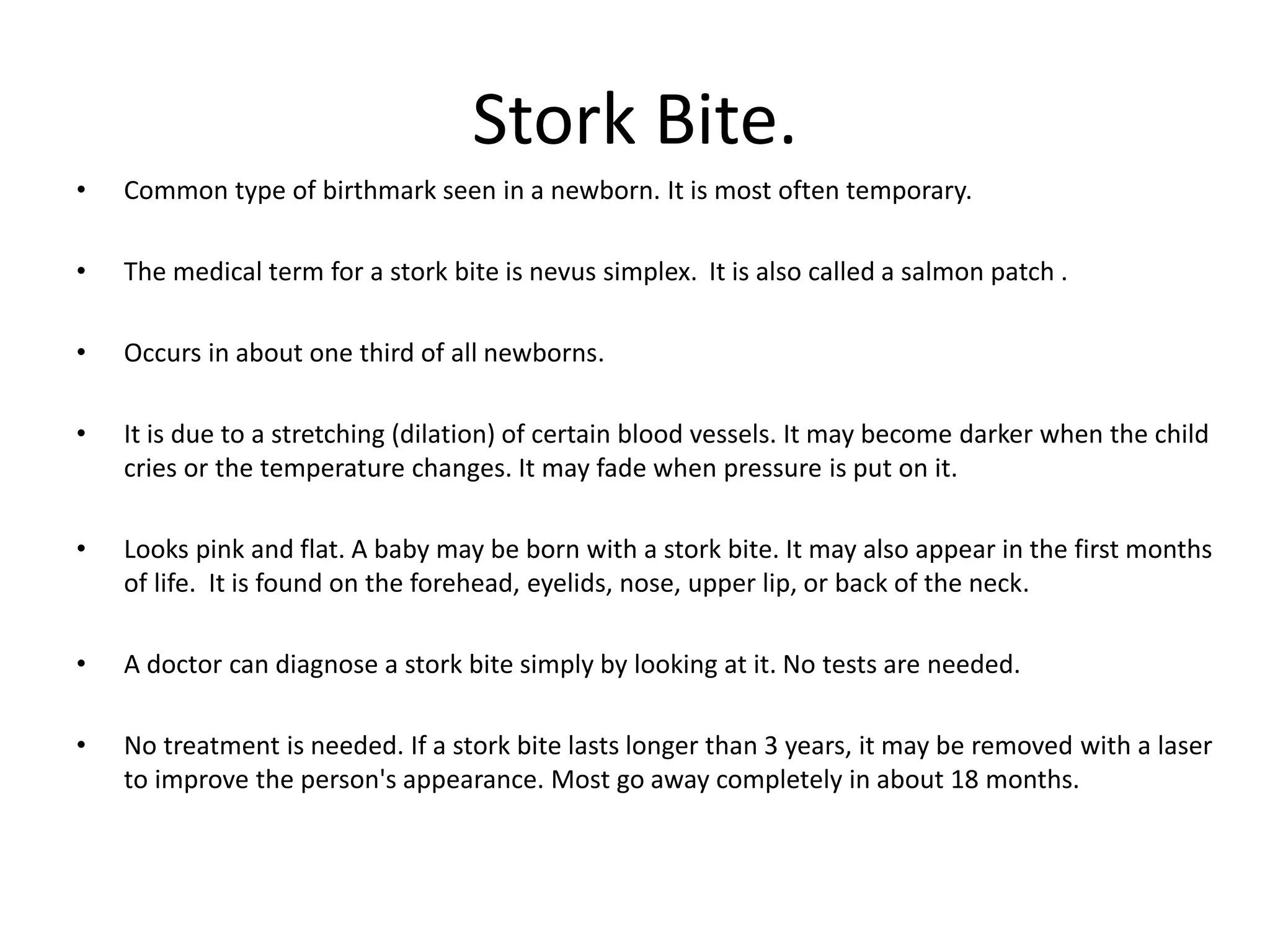This document provides information on several common pediatric dermatologic conditions seen in newborns and children, including:
- Epstein pearls, which are cysts that form in the mouth of newborns and disappear within 1-2 weeks.
- Stork bites (nevus simplex), a common pink birthmark seen in one third of newborns that usually fades within 18 months.
- Erythema toxicum, a self-limiting rash seen in 50% of newborns characterized by small papules.
- Milia, tiny white skin-colored bumps on the face of newborns that disappear within weeks without treatment.
It































































